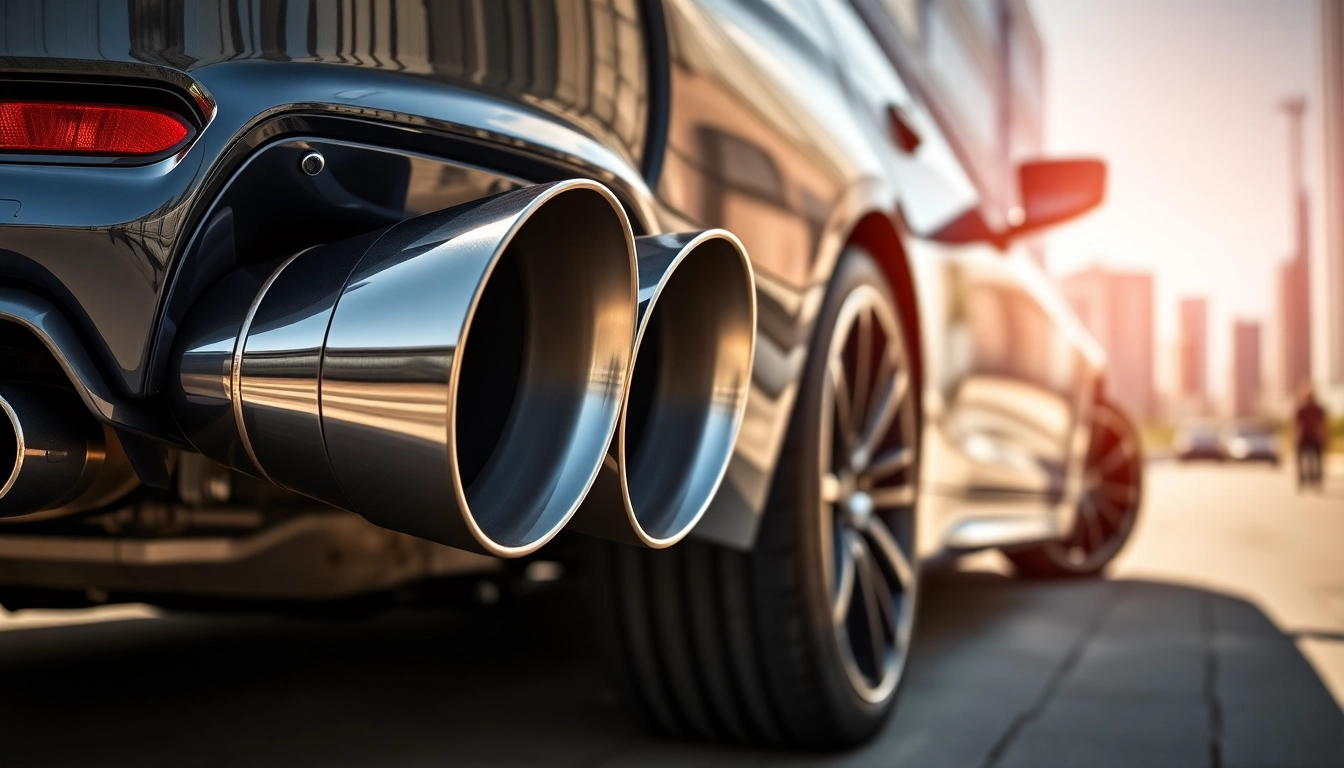What is a Part Exchange?
Definition and Overview of Part Exchange
A part exchange, often referred to as a trade-in or part-exchange deal, is a transaction wherein an individual exchanges an existing item, typically a vehicle or property, for a new one. Instead of employing a traditional monetary transaction, the old item’s value is credited against the cost of the new purchase. This approach streamlines the buying process significantly and is particularly popular in the automotive industry.
When individuals opt for a Part Exchange, they get the advantage of immediate value for their old item, which can be particularly helpful when buying a new car or a house. This arrangement simplifies the whole process and can sometimes yield better financial arrangements compared to outright purchases.
How Part Exchange Works in the Car Market
The mechanics of part exchange in the automotive industry can be summarized in several key steps:
- Assessment of Value: The dealer or seller assesses the vehicle being traded. This includes evaluating its condition, age, mileage, and market demand.
- Negotiation: Based on the assessment, an offer is made to the seller. This offer is often negotiable, depending on the vehicle’s perceived value.
- Transaction Completion: Once both parties agree on the price, the old car is exchanged, and the value is deducted from the purchase price of the new car.
This process allows buyers to ease their financial burden when purchasing a new car, providing them with quick liquidity and reducing the hassle of selling the old vehicle privately.
Benefits of Part Exchange for Buyers
Part exchange offers several notable benefits for buyers in the automotive market:
- Convenience: The transaction process is usually quicker and simpler than selling a vehicle privately.
- Instant Value Application: The value of the old vehicle is immediately deducted from the new purchase price, making it a smoother financial transition.
- Reduced Paperwork: Part exchanges typically entail less paperwork than private sales, as the dealership often handles most of the administrative tasks.
- Trade-In Offers: Many dealers will provide promotions or incentives for part exchange, which can result in a better deal overall.
Evaluating Your Vehicle for Part Exchange
Assessing Your Car’s Value
Understanding your car’s value is critical when considering a part exchange. Various factors will play a role in determining its worth:
- Make and Model: Some brands and models retain value better than others due to demand.
- Condition: The current state of the vehicle, including both mechanical functionality and aesthetic aspects, significantly impacts its resale value.
- Mileage: Generally, lower mileage correlates with higher value, as this suggests less wear and tear.
- Market Trends: Economic factors and consumer demand for certain car types can affect pricing.
Utilizing online valuation tools or consulting with automotive experts can help you gauge a realistic price expectation.
Preparing Your Car for Trade-In
Preparation can make a significant difference in the value offered for your vehicle during a part exchange. Here are some effective strategies:
- Clean Your Car: A thorough cleaning, both inside and out, can enhance the car’s presentation and potentially raise its perceived value.
- Provide Maintenance Records: Showing that the vehicle has been well-maintained can instill confidence in potential buyers.
- Minor Repairs: If feasible, fixing small issues such as dents, scratches, or mechanical problems can increase the trade-in value.
Key Factors Influencing Part Exchange Offers
Several elements can influence the offer you receive for your vehicle during a part exchange:
- Seasonal Demand: Certain times of the year can affect car valuations. For example, convertible cars may fetch a higher value in spring and summer.
- Local Market Conditions: The demand for types of vehicles can differ significantly by geographic location.
- Dealer Inventory: If a dealership is looking to fill space in their inventory, they may provide sweeter deals to offload excess stock.
The Part Exchange Process Explained
Steps to Successfully Part Exchange Your Car
To navigate the part exchange process successfully, following these steps can serve you well:
- Research: Investigate potential dealerships and their part exchange policies. Understanding their approach can help you make an informed choice.
- Elicit Valuations: Get multiple trade-in estimates from various dealers to ensure you receive the best offer.
- Negotiate: Do not hesitate to negotiate the offer based on your research and assessment of the vehicle’s value.
- Finalize the Deal: When you’ve accepted an offer, ensure that all terms are clearly laid out and understood before proceeding.
Common Pitfalls to Avoid in Part Exchange
While engaging in a part exchange can be beneficial, being aware of common pitfalls is also essential:
- Rushing the Process: Take your time to ensure you understand the valuation and offer before accepting.
- Ignoring Paperwork: Ensure you maintain a copy of all transaction documents to protect your interests.
- Underestimating Additional Costs: Be aware of potential fees associated with financing or warranties related to the new vehicle.
Documentation Needed for the Transaction
When part exchanging your vehicle, having the appropriate documentation is crucial:
- Vehicle Registration Document: Proof of ownership is necessary.
- Service History: Maintaining evidence of regular servicing can enhance value perception.
- Insurance Documents: Having your insurance details handy helps in transitioning to your new vehicle.
Comparing Part Exchange vs. Private Sale
Advantages of Part Exchange Over Selling Private
Choosing between part exchange and private selling can be challenging, but part exchange offers several compelling advantages:
- Speed of Transaction: Part exchanges can be completed in a day compared to months of waiting for private buyers.
- Less Effort: The dealership handles most of the transaction, including paperwork, allowing for a much more streamlined process.
- Less Exposure to Risk: In a private sale, the seller might face risks associated with buyers, including potential scams.
When to Consider Selling Your Car Privately
While part exchange has its merits, there are scenarios when selling privately may be beneficial:
- Higher Offers: If you have a desirable model or are comfortable navigating the sales process, you may secure a higher offer compared to a dealership.
- More Control: Selling privately allows you more control over the sales process, including negotiating terms.
- Personal Preference: Some individuals prefer engaging directly with potential buyers to establish trust and rapport.
How to Determine the Best Selling Method
To determine whether to pursue a part exchange or a private sale, consider the following:
- Time Constraints: If you need to sell quickly, part exchange is usually the better option.
- Financial Situation: Assess whether potential higher sale prices from a private sale justify the additional effort.
- Vehicle Condition: If the vehicle requires repairs or has numerous issues, the convenience of part exchange can outweigh the private sale route.
Frequently Asked Questions About Part Exchange
What Are Typical Offers for Part Exchange?
Offers for part exchanges typically vary based on market conditions, vehicle condition, and dealership policies. On average, part exchange offers can range from 50% to 70% of the retail value of the vehicle, but this can fluctuate based on local demand and dealership stock.
Can You Part Exchange a Car with Outstanding Finance?
Yes, it is possible to part exchange a car with outstanding finance. However, the dealer will take into account the remaining balance on your loan when providing an offer, often requiring that the loan be settled before the transaction is finalized. Consulting with your finance provider can clarify options available to you before proceeding with a part exchange.
Myths and Misconceptions About Part Exchange
Several myths and misconceptions about part exchange could deter potential sellers:
- Myth: Part Exchanges Always Offer Lower Values: While it can be true that part exchanges may offer less than private sales, they offer significant convenience and speed, which can hold considerable value for buyers.
- Myth: You Can’t Negotiate: Many people believe dealership offers are firm. However, it’s entirely possible, and often encouraged, to negotiate for a better price.
- Myth: Part Exchanges Are a Hassle: In reality, part exchanges generally require less time and effort than private sales.



